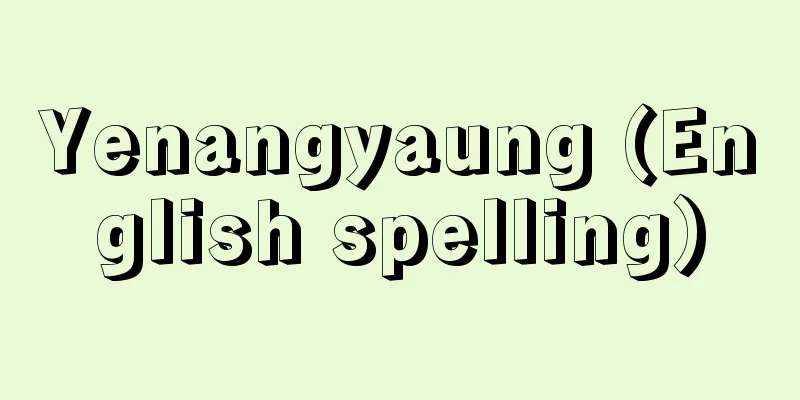cage

|
American composer. Born in Los Angeles. After studying under H. Cowell (1897-1965) in New York, he studied under Schoenberg at the University of Southern California from 1934 to 1937. After attempting compositions that showed the influence of twelve-tone music, he organized a percussion ensemble in the late 1930s and toured the northwestern United States. He also invented the prepared piano (a device in which foreign objects such as erasers are inserted into the strings and hammers of a piano to change the tone and pitch and create a unique sound). He produced works such as Dangerous Night (1943-1944) and Sonatas and Interludes (1946-1948). He also engaged in experimental collaborations with dancer Cunningham and others. Meanwhile, under the influence of Suzuki Daisetsu and others, Cage developed an interest in Zen and Eastern thought, and from the late 1940s he introduced the concept of "chance" (see Music of Chance), inspired by the Chinese method of I Ching. He wrote piano pieces such as "Music of the I Ching" (1951), and in 1952, he questioned the meaning of silence in music with his completely silent piece "4'33" (4'33"). In 1954, the piece was performed in West Germany, causing a stir in the European composition world at the height of the Musique seriale movement. Cage is also known for pioneering the reevaluation of Satie, and his influence, which continued to expand into various fields beyond the boundaries of music, has continued to grow in many areas since then. →Minimal music→Related topicsEno | Yoko Ono | Kaprow | Chance | Satie | Stockhausen | Sogetsu Art Center | Paik | Pärt | Rauschenberg Source : Heibonsha Encyclopedia About MyPedia Information |
|
米国の作曲家。ロサンゼルス生れ。ニューヨークでH.カウエル〔1897-1965〕に学んだのち,1934年−1937年南カリフォルニア大学でシェーンベルクに師事。12音技法(十二音音楽)の影響を示す作曲を試みたのち1930年代末に打楽器アンサンブルを組織して米国北西部を巡回。またプリペアード・ピアノ(ピアノの弦やハンマーに消しゴムなどの異物を仕掛け,音色やピッチを変化させて特異な響きをつくりだすもの)を考案。《危険な夜》(1943年−1944年),《ソナタとインタールード》(1946年−1948年)などを発表。また,舞踊家カニンガムらと実験的な協同作業を展開した。一方,鈴木大拙(すずきだいせつ)らの影響で禅や東洋思想への関心を深め,1940年代末からは中国の易(えき)の方法にヒントを得て〈偶然性〉(偶然性の音楽参照)を導入。ピアノ曲《易の音楽》(1951年)などを書き,1952年には一切楽音を発しない《4分33秒》で音楽における沈黙の意味を問う。1954年にはその作品が西ドイツで演奏され,ミュジック・セリエル全盛期のヨーロッパ作曲界に波紋を広げた。サティ再評価の先鞭(せんべん)をつけたことでも知られ,その後も多面的な活動を展開したケージの影響は,音楽の枠を越えてさまざまな領域に及んでいる。→ミニマル・ミュージック →関連項目イーノ|オノ・ヨーコ|カプロー|偶然|サティ|シュトックハウゼン|草月アートセンター|パイク|ペルト|ラウシェンバーグ 出典 株式会社平凡社百科事典マイペディアについて 情報 |
Recommend
Luthuli
A South African nationalist leader and one of the ...
IC Writer - IC Writer
...In 1965, an electronic lighter that uses a pie...
Kinowa Saku Ruins - Kinowa Saku Ruins
In the northern part of Sakata City, Yamagata Pref...
Senchikogane - Senchikogane
This insect belongs to the family Geotrupidae of ...
deviant behavior
…Researchers sought a kind of index to scientific...
Isaza - Isaza (English spelling) Lake Biwa goby
A freshwater fish belonging to the family Gobiida...
Crust - Scabs
〘noun〙 A crust formed when a blister or pustule bu...
Bellah, Robert Neelly
Born: February 23, 1927 in Altus, Oklahoma [Died] ...
Gavrila Romanovich Derzhavin
A Russian poet. Born into a poor provincial noble...
Ashvamedha (English spelling)
An Indian horse shrine. A festival held by kings w...
Political change
Since politics is a continuous process of human a...
Landor, Walter Savage
Born January 30, 1775, Warwick Died: September 17,...
Mortonagrion selenion (English spelling) Mortonagrion selenion
... Mortonagrion hirosei (discovered in Hinuma, I...
Ganglioside - Gangurioshido (English spelling) ganglioside
A type of glycolipid (a general term for a substa...
Carnot's theorem
Of heat engines operating between two heat sources...









